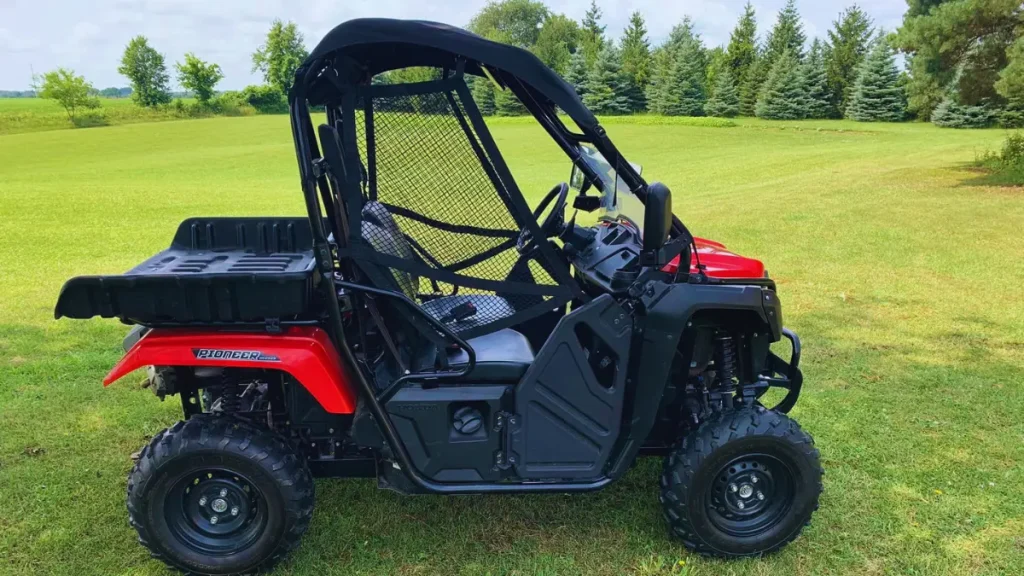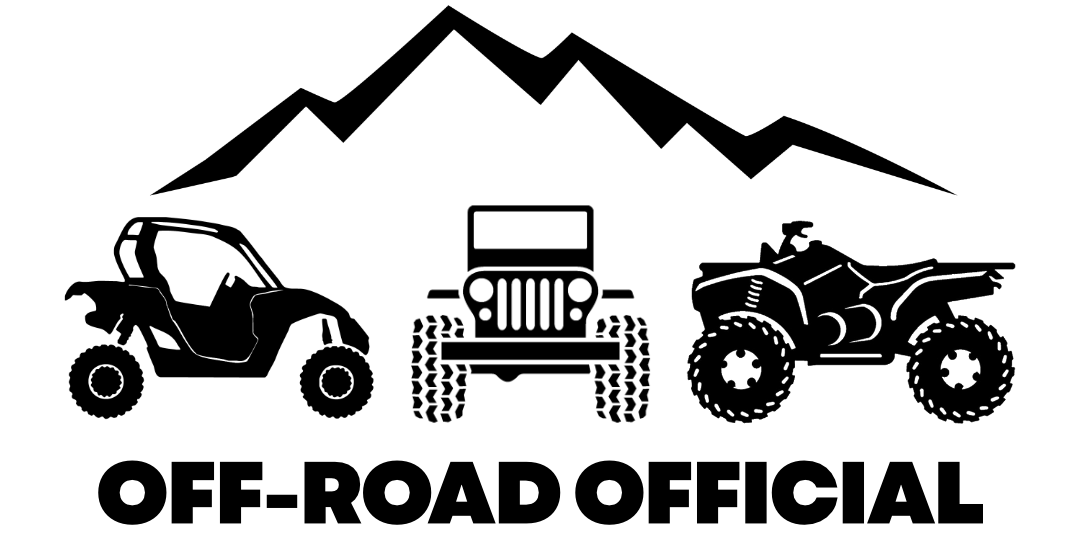The Honda Pioneer 500 is one of the most basic UTVs on the market, but is about as durable and dependable as it gets per owner reviews.
While it doesn’t quite make the list of best cheap side-by-sides, the Honda Pioneer 520 does.
But even with plenty like about the Pioneer 500, there’s no denying it suffers from a few common problems that drive owners a little crazy, including:
- Shifting problems
- Constant squeaking and rattling
- Cramped cab area
- Lack of a rear cargo bed
- An uncomfortable suspension
- Faulty fuel pump recall
This guide will explain each problem in more detail, along with proven fixes for overcoming them.
Shifting Problems
Issues shifting gears are by far the most common problem with the Pioneer 500.
The symptoms include:
- Being stuck in a certain gear
- Inability to shift to a specific gear
- Paddle shifts not working
- Clutch slipping between gears
These issues also occur in the Pioneer 700, with the Pioneer 1000 suffering from them as well.
The automotive-style transmission and wet clutch are the common cause of these symptoms, and there are a number of ways to overcome them, including:
- Warming up your Pioneer
- Check the oil and slightly overfill
- Force oil back into the clutch-pack
- Adjust the clutch via the clutch adjustment screw
Fixes
Warm It Up
Giving your Pioneer 500 around five minutes to warm up and get the juices flowing before driving it should help to minimize any issues with shifting.
Check Your Oil Level
If there’s not enough engine oil, your Pioneer 500 may tend to slip out of gear.
The wet clutch needs plenty of oil, so make sure your oil level is close to full. If not, add some more or change the oil, even slightly overfilling when you do.
No Oil In The Clutch Pack
Like mentioned above, the clutch and gears need oil to operate properly.
Because of the unique transmission used in the Honda Pioneers, the clutch-pack tends to drain of oil occasionally which leads to the shifting problems highlighted above.
There’s a process you can follow to fill the clutch-pack with oil again so that the gears will shift smoothly like they should.
Driving in first gear, get your RPMs up high and then abruptly let off the gas pedal while at the exact same time shifting up into second gear using the manual paddle shifters.
Be sure to hold the paddle shifter in place for a few seconds immediately after doing this. Do this a couple times and oil should fill the clutch-pack again.
Clutch Adjustment
A simple clutch adjustment using the clutch adjustment screw can help alleviate these problems as well. Adjust the clutch following these steps:
- Find your clutch adjustment screw beneath the seat.
- Loosen the nut that holds it in place using a 14mm box-end wrench.
- Turn the adjustment screw a full turn in the clockwise direction using a short-slotted screwdriver.
- After doing so, tun the adjustment screw back counter clockwise until you feel some resistance
- When you start to feel resistance, turn the screw back clockwise between a quarter-turn and half-turn.
- This should reset your clutch screw to its general setting, but you may need to test it a few times to get it right.
Constant Rattling & Squeaking
While the engine in the Pioneer 500 is not as whisper quiet as some of the best electric UTV options, it’s pretty darn quiet.
But don’t plan on a quiet ride, as these models are known to squeak and rattle from various places, including:
- Side doors
- Motor mounts
- Body/frame
- Front differential
The Pioneer 520 is also prone to similar problems, but there are some fixes.
Fixes
Side Doors
The half side-doors on the Pioneer 500 are known to rattle over time, largely due to the bump stops.
If your doors rattle like many others’ do, you can remove the bump stops and use a wrench to bend the bottom of the bracket in the bump stop holes slightly outward.
Put the bump stops back in and give the doors a good slam shut, and the rattling should stop.
Motor Mounts
The motor mounts that connect the engine sub-frame to the body of the Pioneer are also prone to causing squeaking.
There should be three of them, and you can spray them down with WD-40 Specialist Silicone spray to stop the squeaking.
Body/Frame
The nuts and bolts that hold the body and frame together are also a common cause of squeaking, which happens when they loosen even slightly.
Going over and tightening every last nut and bolt should help, and you can top this off by greasing each of the fittings and zerks.
Front Differential
The four bolts that hold the front differential in place can cause squeaking as well.
Loosen these bolts up and push down on the drive shaft yoke. While you apply pressure, have someone else tighten the bolts back up.
Cramped Cab Area
The Pioneer 500 is one of the smallest UTV models in the industry, which has its benefits and drawbacks.
The main drawback with this is the cab space is quite cramped, especially if you’re a bigger guy.
The legroom isn’t great to begin with, but if you have any semblance of long legs, you’ll have to do some contorting to find a comfortable position for them.
And if you’re a bigger rider riding next to a bigger rider in the passenger seat, you’re going to be shoulder to shoulder and right on top of each other.
Just something to consider for the big n’ tall riders out there.
No Rear Cargo Bed?!
This is more of a drawback than a problem, but it’ll become a problem if you plan to haul any sort of loads around using the Pioneer 500.
This model is one of the last few in the industry that doesn’t have a rear cargo bed for hauling or dumping.
This model does have a rear storage space with a utility rack, making the rear resemble that of one of the industry’s best ATV models than a UTV.
The good news is that there are some cargo beds you can buy that will fit on the back of the Pioneer 500 to give you more functionality, and a number of owners have rigged one up on their own.

Suspension Makes For Bumpy Ride
One of the most common complaints with the Honda Pioneer 500 is with the suspension system.
At only 50 inches in width, the Pioneer 500’s suspension system utilizes shorter A-Arms that don’t offer very much travel or ground clearance.
This makes for a rougher ride, especially in rugged terrain.
Bumps, holes, and uneven terrain will bounce you around pretty good in the cab, and the minimal ground clearance leads to frequent bottoming out in rutted terrain.
Fixes
The only way to combat this is to add some aftermarket shocks to increase the ground clearance and travel. Installing larger tires will help as well.
Fuel Pump Recall
A service bulletin was released by Honda in 2020 announcing a recall on certain 2019 and 2020 Pioneer 500, 700 and 1000 models due to faulty fuel pumps.
There were reports of the fuel pumps going out causing no-start problems with the engine.
Fix
If you own a 2019 or 2020 Pioneer 500, you should have it checked by your dealer to ensure you don’t have one of the faulty fuel pump units.
The inspection and any repairs should be covered by Honda under the recall.
Conclusion
Every UTV or side-by-side is going to come with some common problems that plague it, and the Pioneer 500 is no different.
But Honda Pioneers are some of the better models you can buy, and you can read about why in this review of the Pioneer 700 and Pioneer 1000.


